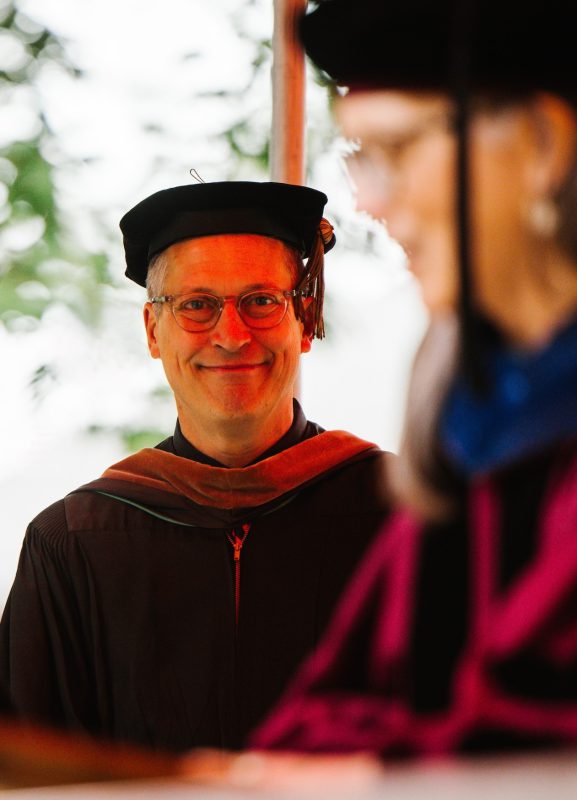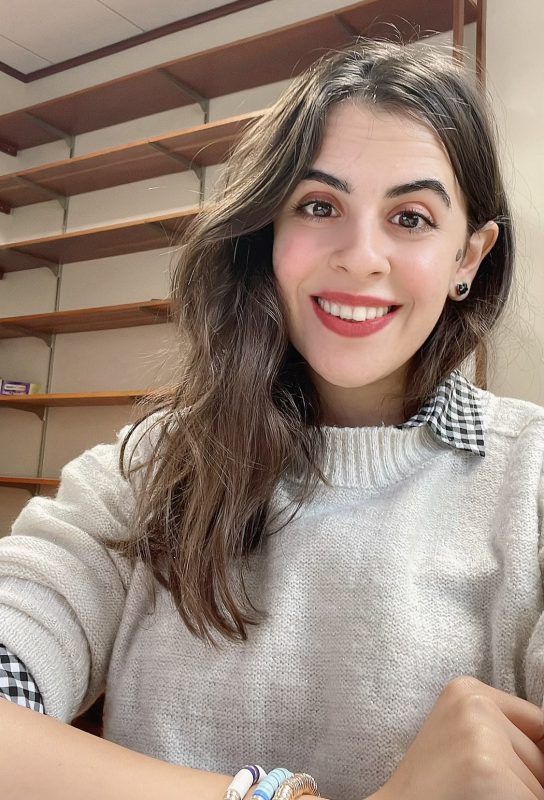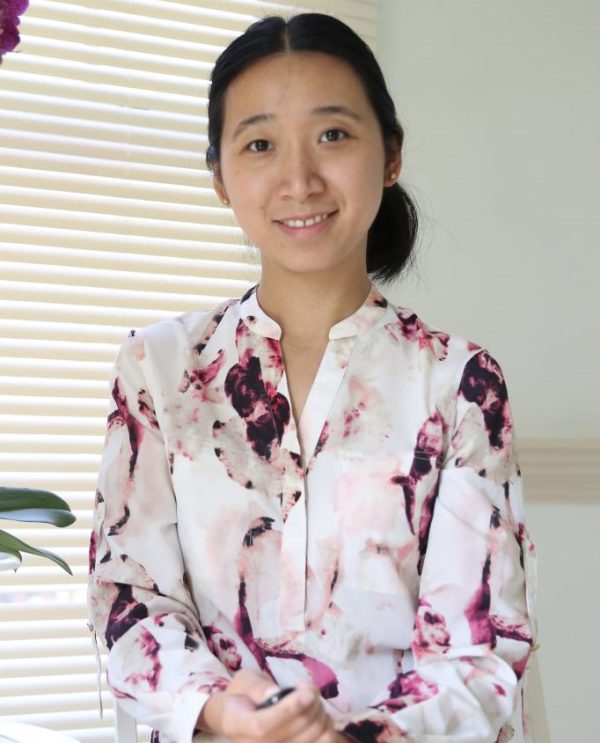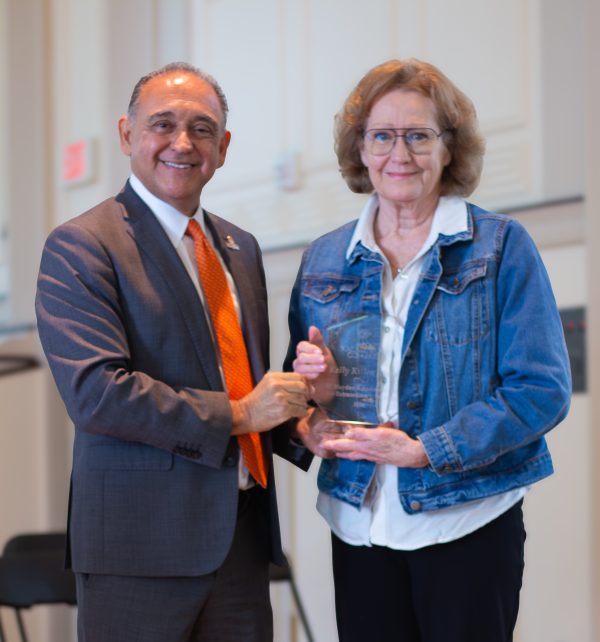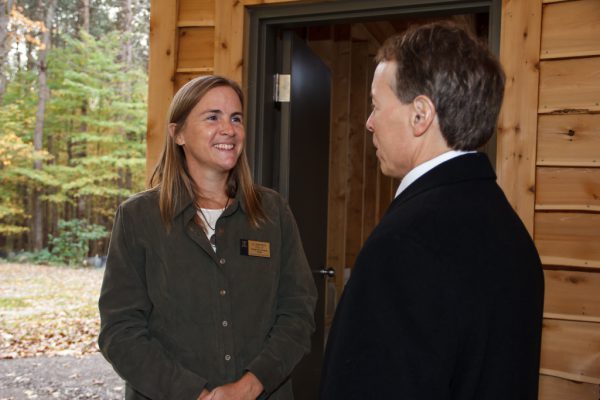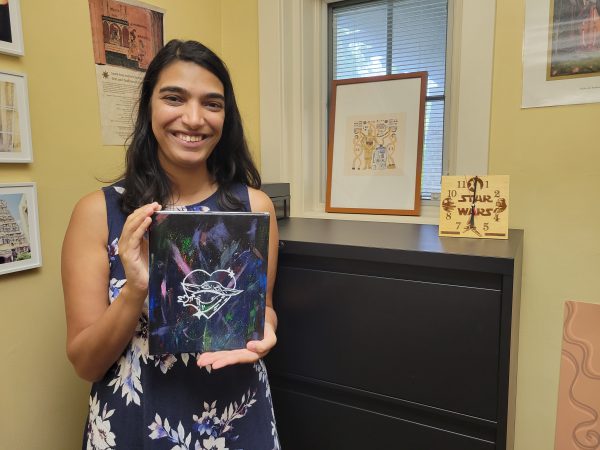Anne Marie Butler, assistant professor of art history and women, gender and sexuality at Kalamazoo College, is a recipient of a 2024 Andy Warhol Foundation Arts Writers Grant, the foundation announced December 2.
Butler is one of nine grantees in the article category, for her article, “Deviance, Penetration, and the Erotic in Aïcha Snoussi’s Drawing Installations,” examining the Tunisian artist’s work. Butler’s research focuses on contemporary Tunisian art, global contemporary art, contemporary global surrealism studies, Southwest Asia and North Africa studies, gender and sexuality studies, and queer theory.
“I am honored to have been selected from amongst many wonderful scholars to receive this prestigious award,” Butler said. “This grant will support 2025 travel to conduct primary research for a new scholarly article on Aïcha Snoussi’s (Tunis and Paris) works. Informed by Heather Love and Audre Lorde, I argue for a new reading of Snoussi’s drawing installations, illuminating intimate relationships between theories of queer of color archives, deviance, and erotics.”
The grant program supports writing about contemporary art, with the goal of maintaining critical writing as a valued way of engaging with the visual arts.
“Artists play a vital role in illuminating key issues of our time, but it is thanks to the attention and insights of arts writers that artists’ visions become widely known and discussed,” said Joel Wachs, president of the Andy Warhol Foundation for the Visual Arts. “The Andy Warhol Arts Writers Grant supports and celebrates the crucial contributions of writers who not only transmit but creatively engage with artists’ methods, intentions, contexts, and blind spots to bring their perspectives into focus in the public sphere.”

In addition to nine article writers, the 2024 Arts Writers Grants include nine books and 12 short-form writing awardees, for a total of $945,000 to 30 writers. Ranging from $15,000 to $50,000 each, the grants support projects targeted at both general and specialized art audiences, from reviews for magazines and newspapers to in-depth scholarly studies.
“The 30 writers receiving support this year are working on projects asking urgent questions about art’s place in the world today,” said Pradeep Dalal, director of The Andy Warhol Foundation Arts Writers Grant. “Exploring topics including art’s relationship to fossil fuel extraction, Native art and activism, migration and questions of visibility, internationalist solidarity networks, DIY publishing, and LGBTQ comic artist communities, and covering artists working in Chile, Columbia, Japan, Mexico, Puerto Rico, Taiwan, Tunisia, Turkey, and Venezuela, this year’s grantee projects actively expand our understanding of contemporary art. Many of these projects make unexpected connections between seemingly disparate aspects of art and culture. Despite the severe contraction of available venues for publishing in the arts, these writers continue to enrich and expand the academic disciplinary frameworks of both art criticism and art history.”
Butler’s writing has appeared in publications including ASAP/Journal, Journal of Middle East Women’s Studies, Liminalities: A Journal of Performance Studies, and the London Review of Education. She recently co-edited a new book, Queer Contemporary Art of Southwest Asia North Africa (Intellect Press, 2024).







